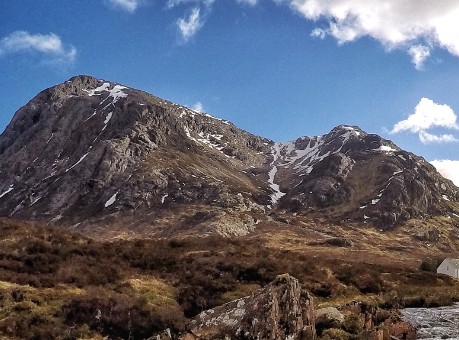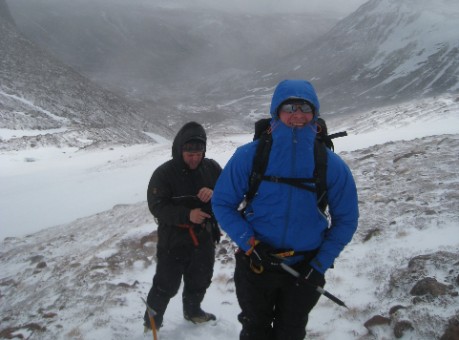It’s not just you: every hillwalker is raring to go when the spring comes. Winter is over, the sun’s warm in your face and the snow is gone.
But spring can be a real mix of all types of weather and conditions, so it's important to be prepared and aware of potential hazards.
The Scottish mountains hold snow long into the spring and early summer, which creates particular challenges in the underfoot conditions. Remaining snow patches will often be hard and located high up on the shady, north side of the mountain, and can sometimes be covered by fresh snow. Many traditional mountain routes cross through such terrain and are the usual choice for Munro baggers. Hill walkers are advised to treat these old snow patches with caution, particularly if the ‘run out’ below is over steep ground.
Route choice at this time of year is particularly important and hill walkers without ice axe and crampons should consider a ‘snow free’ alternative or simply turn around.
A classic example of a popular route often affected by snow long-lying snow is Coire na Tulaich on Buachaille Etive Mor, near Glen Coe. In summer Coire na Tulaich provides the trade route up this iconic Munro but the north-facing corrie holds snow well after it has disappeared elsewhere and can be extremely dangerous.
This late snow, referred to as spring snow, can vary from being quite sugary and easy to kick steps in, to being hard and icy, with high risk of a slip or fall if you don’t have crampons and an ice axe. And the same patch of snow can change in consistency as conditions change through the day; a patch can be hard and icy in the morning but softer in the afternoon.

Snow covers the Coire na Tulaich path. Photo by Jakob Konieczynski.
The weather can also catch people out in the spring months. A day that tempts people down to shorts and a tee-shirt can very easily change to blizzard conditions or be freezing cold on the tops due to strong wind. Substantial falls of snow can happen right up until May, and sometimes into June and July.
Always make sure you check weather conditions for the mountains where you are headed.
MWIS and the Met Office provide specific hill and mountain forecasts which will give conditions at summit level as well as for the glens.

Late April in the Cairngorms. It was a full-blown white-out higher on the hill.